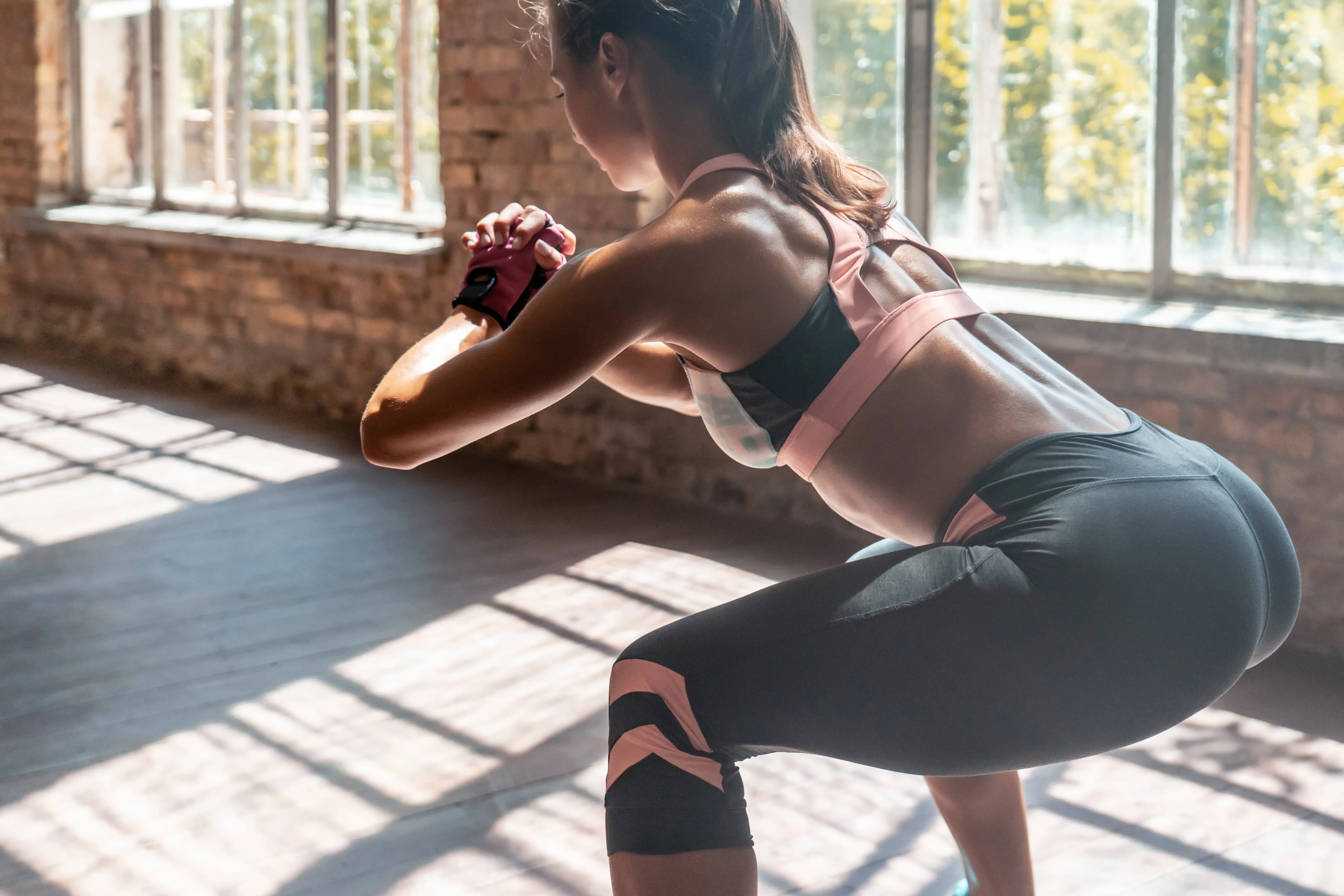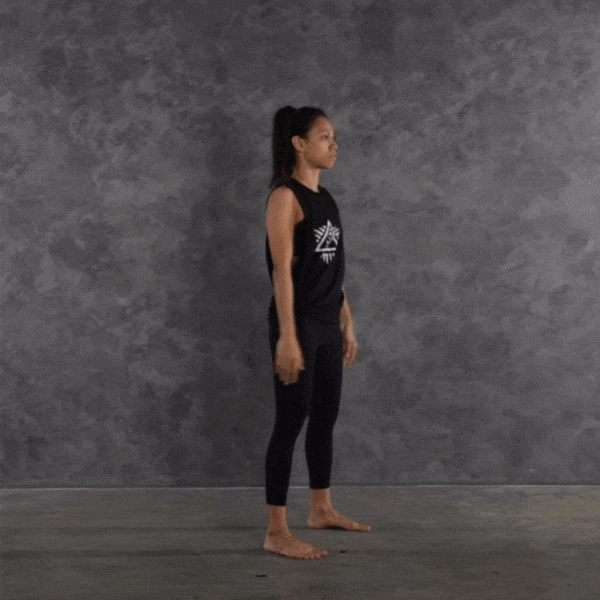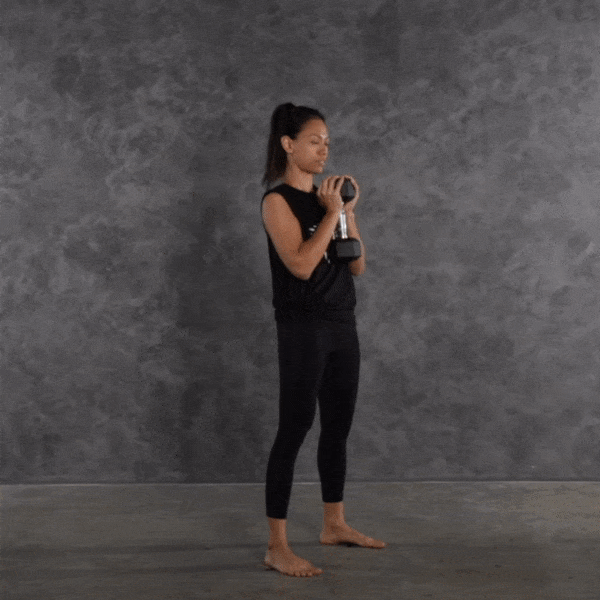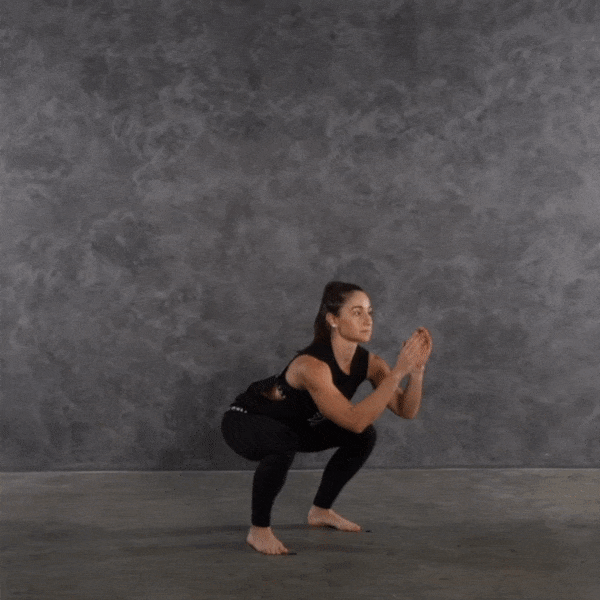Insights and recommendations powered by Slated AI Coach
Level up your squat


So, you’ve mastered the basic bodyweight squat—your form is on point, and you can bang out perfect reps with increasing ease—and now you’re looking for a little more bang for your buck. You check out the movement library in the Ritual FIT app, and there are over 20 different types of squat, of varying levels of difficulty.
We get it, it can be a little overwhelming—how are you supposed to choose which variation to do, and when? In this article, we’re going to look at how to best approach switching between the various types of squat during your workouts.
How to think about the levels
You’ve probably noticed that each exercise in our movement library is ranked from level 0 up to level 3. The best way to look at these 'levels' are as guidelines of intensity, not as strict rules. A level 3 is more intense than a level 1—that's it. It doesn’t mean a level 3 movement is ‘better’, so you shouldn’t ever feel like you’re compromising on your results by doing a bodyweight squat instead of a weighted squat.
Similarly, you shouldn’t ever feel like you’re a ‘level 2’ person—you can never outgrow the basics, so even the most advanced athletes should be mixing things up, both within and across workouts. You should use each level, and eventually each variation, for the purpose you’re trying to serve at the time.
Mixing things up during a workout
Let's look at an example of how you'd go about switching between the various squat variations during a workout:
When you're warming up, start with a basic squat
Regardless of what your usual variation is, when you’re in set 1 (which you should always treat as part of the warm-up), sticking to the basic squat, or even the assisted squat, will give your joints and muscles some time to oil up and fire up nicely.

The squat is a demanding exercise that involves a large amount of muscle and coordination, so it’s always a good idea to give your body some time to work out any kinks.
If you’re feeling great and ready for more, add some weight
As you move into set 2 of the workout, consider switching to a weighted squat and focusing on getting in some high-quality strength reps (if you don’t have dumbbells, kettlebells or a medicine ball, feel free to improvise with bottles or a backpack).

Your body should be ready to handle the extra challenge as you’ve primed it during the warm-up set, putting you in a much safer position to start pushing and getting more out of each rep.
Aim to kick things up one more gear towards the end of the workout
Now, maybe you’re getting deeper into the session, still feeling good, and want to kick it up one more gear. This is a good time to ditch the weight and switch to jump squats, with a focus on exploding high and landing softly.

This will really jack up your heart rate and light up your thighs, so you might not be able to sustain this level for very long. That’s okay. Remember, adding a jump doesn’t have to be an ‘all or nothing’ move—you can throw in a jump every other squat if you’re more comfortable with that.
Always be ready to regress
When you find it’s getting a lot harder to maintain good form—basically, when things start getting a little shaky—it’s time to regress to an easier movement or use less weight. Don’t try to power through and risk injury, just stop—even if you’re mid-set. Bad form leads to bad outcomes.
So if you’re doing jump squats and you’re no longer landing cleanly, take a moment to regress to regular bodyweight squats, and finish off the workout with some high-quality reps at a fast pace. Perfect reps of a basic movement is way better for you than shaky reps of a more difficult movement, so it’s essentially self-defeating to try powering through just to protect your ego. You only get one body, so be smart about how you exercise it.
If you have to stop, there’s no shame in doing so
Avoiding injury is the most important part of any workout program, as nothing is surer to stop your progress than being unable to train at all. Never try to grind things out in the face of actual pain. If your knee starts complaining when you try jump squats, don’t be a hero—just stop and live to fight another day. There’s no finish line to fitness, and playing the long game involves staying pain-free.
Applying the same framework to all movement patterns
While all the above focuses on squats, it’s actually a framework you can apply across any movement pattern. For example, if burpees are on the menu, you could start with a medium pace burpee, increase the challenge with the double burpee, and finish off by adding a jump or a tuck jump, always ready to regress if you start to struggle.
The key takeaway here is that you should feel free to switch seamlessly between the different variations of a movement according to where you are in the workout, and how you’re feeling at the time. Challenge yourself when you’re feeling good, but don’t sweat it if you’re not at your best and just want to stick to a basic movement for the whole workout.
As you get more confident and in tune with your body, this process should start to become more and more intuitive, and it becomes second nature to listen to your body and modulate your training accordingly.

Ian Tan is the Co-Founder of Ritual. He’s got an MSc in Strength and Conditioning, a background in psychology, and is a Certified Strength and Conditioning Specialist (CSCS).


